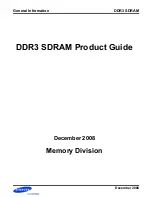
108
[SwitchB-Vlan-interface1] quit
[SwitchB] interface vlan-interface 2
[SwitchB-Vlan-interface2] mpls
[SwitchB-Vlan-interface2] mpls te
[SwitchB-Vlan-interface2] mpls rsvp-te
[SwitchB-Vlan-interface2] quit
[SwitchB] interface vlan-interface 4
[SwitchB-Vlan-interface4] mpls
[SwitchB-Vlan-interface4] mpls te
[SwitchB-Vlan-interface4] mpls rsvp-te
[SwitchB-Vlan-interface4] quit
NOTE:
Follow the same steps to configure Switch C, Switch D, and Switch E.
4.
Create an MPLS TE tunnel on Switch A, the ingress node of the primary LSP.
# Create an explicit path for the primary LSP.
[SwitchA] explicit-path pri-path
[SwitchA-explicit-path-pri-path] next hop 2.1.1.2
[SwitchA-explicit-path-pri-path] next hop 3.1.1.2
[SwitchA-explicit-path-pri-path] next hop 4.1.1.2
[SwitchA-explicit-path-pri-path] next hop 4.4.4.4
[SwitchA-explicit-path-pri-path] quit
# Configure the MPLS TE tunnel carried on the primary LSP.
[SwitchA] interface tunnel 4
[SwitchA-Tunnel4] ip address 10.1.1.1 255.255.255.0
[SwitchA-Tunnel4] tunnel-protocol mpls te
[SwitchA-Tunnel4] destination 4.4.4.4
[SwitchA-Tunnel4] mpls te tunnel-id 10
[SwitchA-Tunnel4] mpls te path explicit-path pri-path preference 1
# Enable FRR.
[SwitchA-Tunnel4] mpls te fast-reroute
[SwitchA-Tunnel4] mpls te commit
[SwitchA-Tunnel4] quit
Perform the
display interface tunnel
command on Switch A. You can see that Tunnel4 is up.
[SwitchA] display interface tunnel
Tunnel4 current state: UP
Line protocol current state: UP
Description: Tunnel4 Interface
The Maximum Transmit Unit is 64000
Internet Address is 10.1.1.1/24 Primary
Encapsulation is TUNNEL, service-loopback-group ID not set
Tunnel source unknown, destination 4.4.4.4
Tunnel protocol/transport CR_LSP
Output queue : (Urgent queuing : Size/Length/Discards) 0/100/0
Output queue : (Protocol queuing : Size/Length/Discards) 0/500/0
Output queue : (FIFO queuing : Size/Length/Discards) 0/75/0
Last 300 seconds input: 0 bytes/sec, 0 packets/sec















































